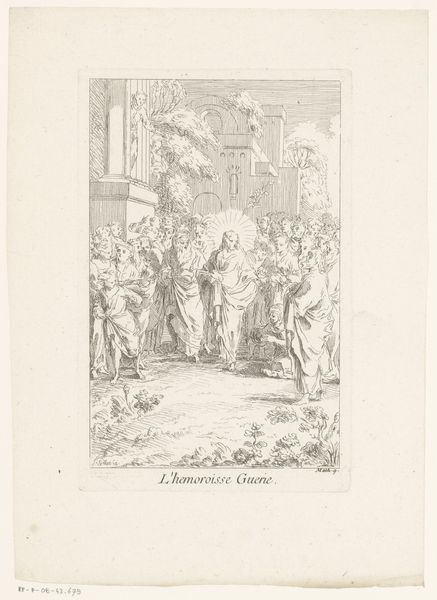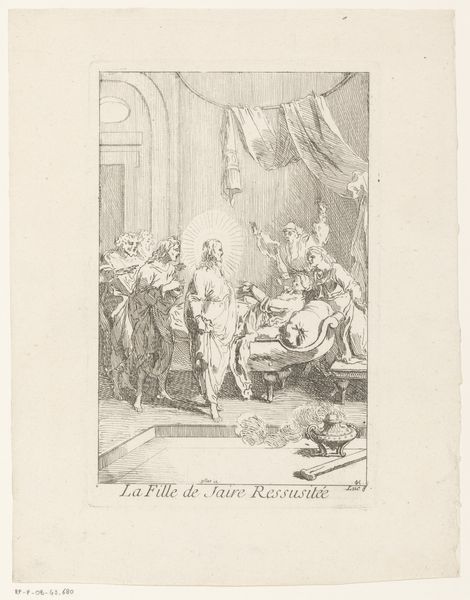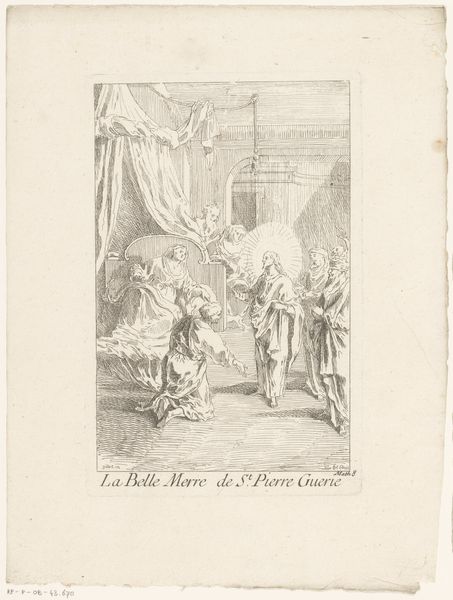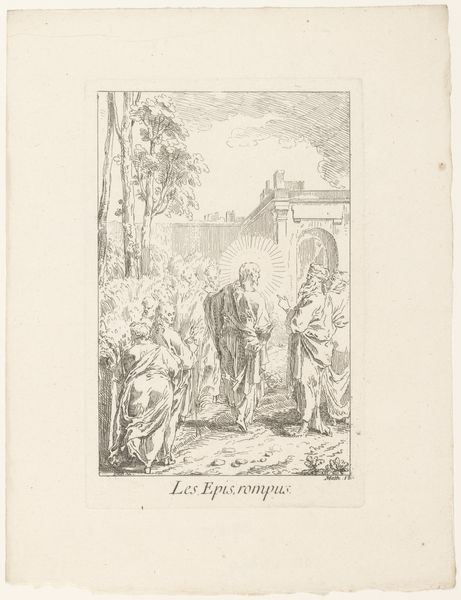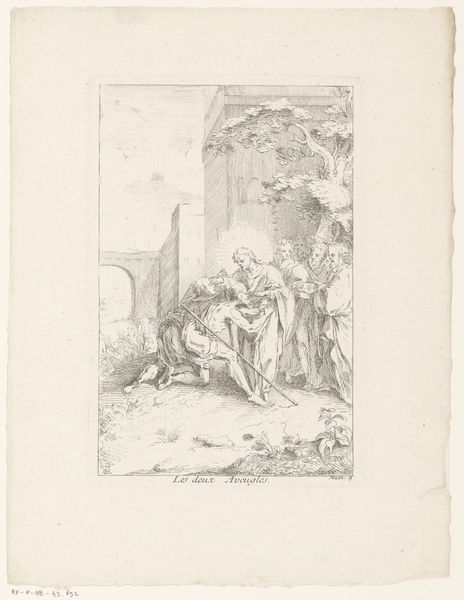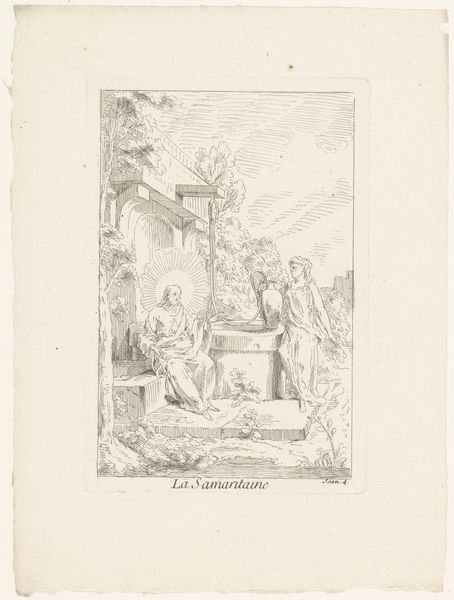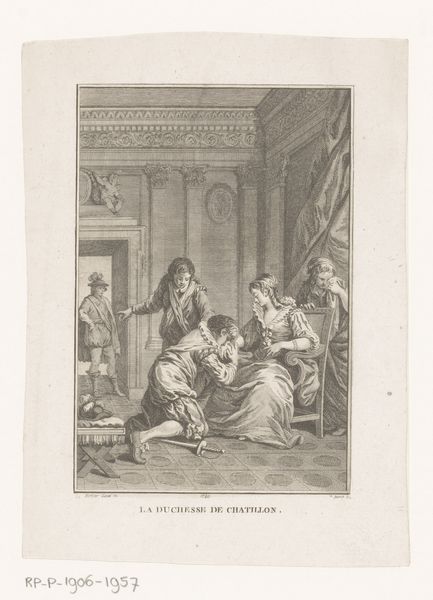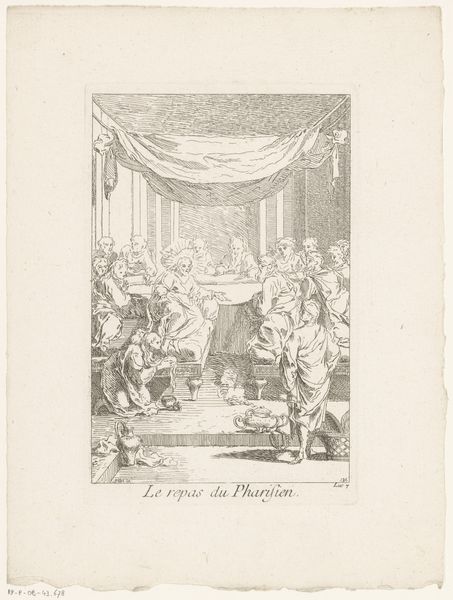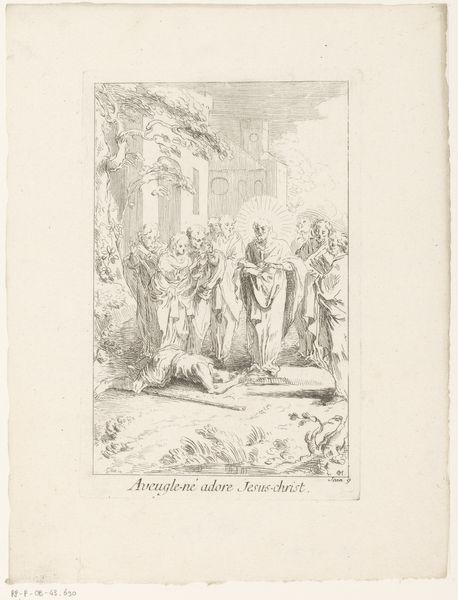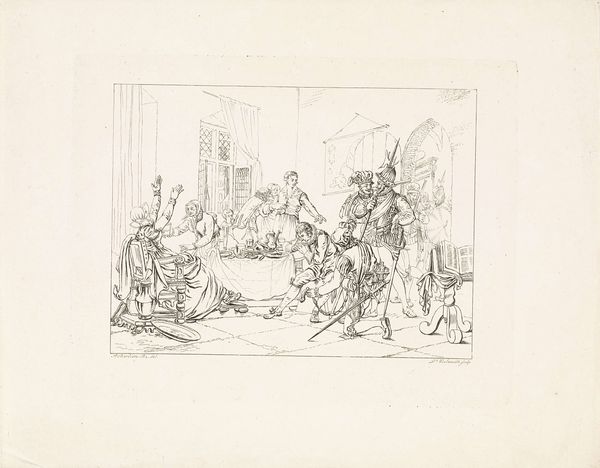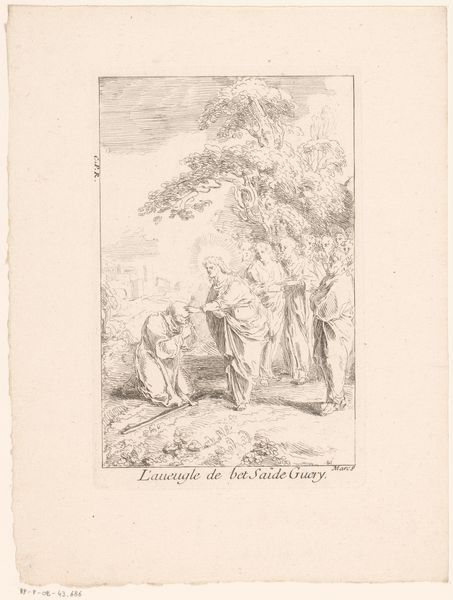
drawing, print, paper, ink, engraving
#
drawing
#
aged paper
#
light pencil work
#
narrative-art
#
baroque
#
ink paper printed
# print
#
pencil sketch
#
old engraving style
#
figuration
#
paper
#
personal sketchbook
#
ink
#
ink drawing experimentation
#
pen-ink sketch
#
sketchbook drawing
#
pencil work
#
history-painting
#
engraving
Dimensions: height 199 mm, width 128 mm
Copyright: Rijks Museum: Open Domain
Editor: We're looking at Gabriel Huquier's "Christus en de vrouw van Kanaän," made before 1732. It’s a print, an engraving on paper housed here at the Rijksmuseum. The line work is incredibly delicate. What jumps out to me is the texture, or lack thereof – everything is so smooth. What’s your take on it? Curator: The smoothness, as you call it, is a deliberate choice reflecting the material realities of printmaking at the time. This wasn't about mimicking the texture of paint; it was about mass production. Think about the consumption of these images, how they were traded, collected, and used to disseminate ideas. It moves beyond simple aesthetics, no? Editor: I hadn't considered the reproduction aspect so deeply. I was just caught up in the scene itself – Christ and the kneeling woman. Does the material then inform our understanding of the narrative? Curator: Absolutely! Consider the type of paper available, the tools used to engrave the plate – each element contributes to the final product and its reception. Was this meant for the wealthy elite or a broader audience? How does that impact the artist's decisions about detail and complexity? Editor: So it's not just about *what* is depicted, but *how* it was made and *who* it was for? Curator: Precisely. It speaks to a whole network of makers, distributors, and consumers. It is about considering art as a product embedded in a social and economic system. Editor: This makes me think of the labor involved. How long would something like this take to produce? It’s humbling to imagine the artist hunched over a plate for days. Curator: Exactly! Appreciating that labor changes our understanding of the image, right? Editor: It does. I went in thinking about the biblical narrative, and now I'm pondering the artist's workshop and the 18th-century art market! Thanks for opening my eyes. Curator: And you made me consider the value we often place on unique artworks compared to the artistry of mass-produced prints. A productive exchange, I think!
Comments
No comments
Be the first to comment and join the conversation on the ultimate creative platform.
